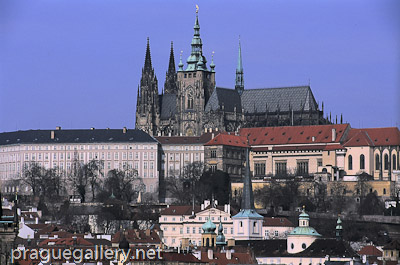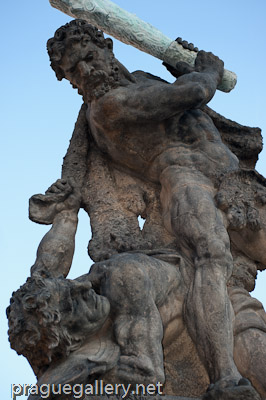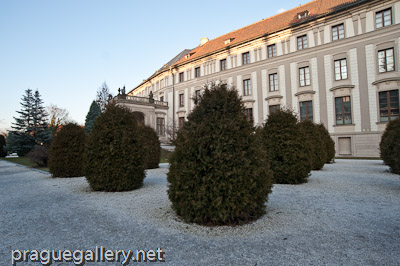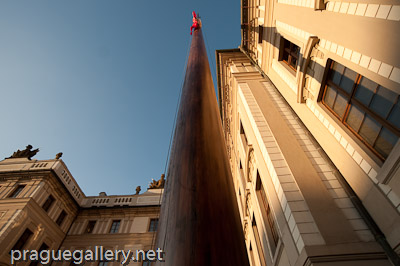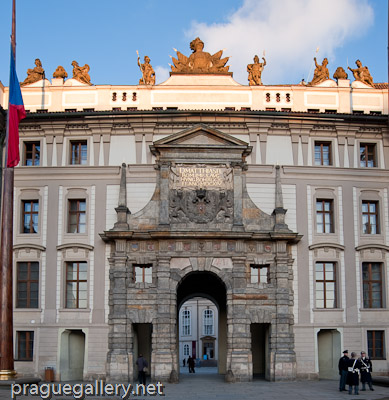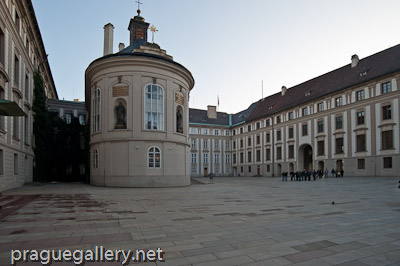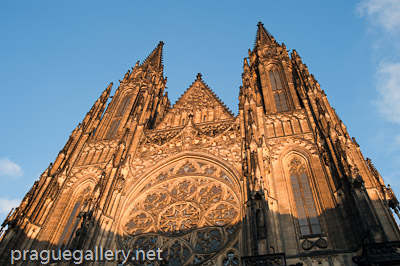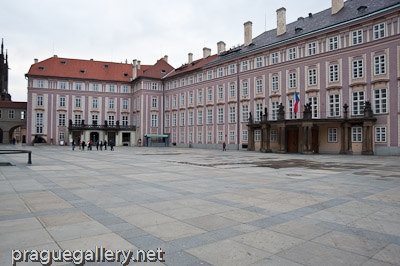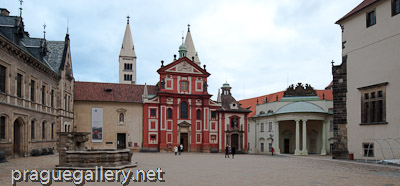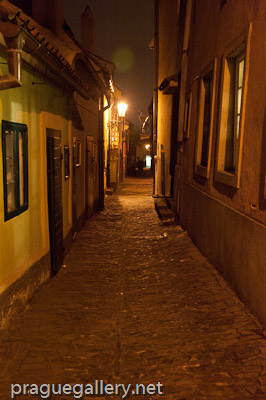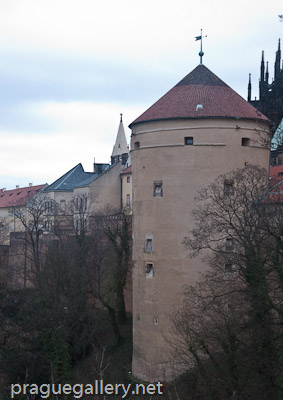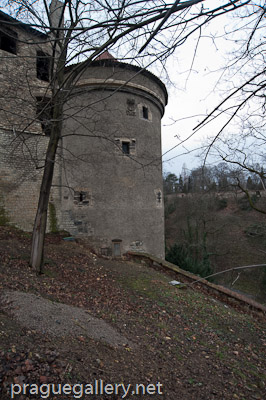Prague Castle
The castle of Prague was first built in the 9th century on top of what is now called Hradčany (Castle Hill). It is one of the biggest castles in the world. It’s view from the Charles Bridge, with the St. Vitus cathedral dominating the city from behind its walls represents, for many tourists, the symbol of their visit to Prague. Inside the castle complex there are palaces, towers, gardens, the gothic cathedral of St. Vitus, the basilica of St. George, and a monastery. The castle currently hosts many museums including the Toy Museum, the National Gallery collection of Bohemian baroque and mannerism art, the Crown Jewels and a picture gallery.
A steep walk up Nerudova street leads to the west entrance to the castle, on Hradčanské náměstí.
The two statues of fighting gladiators adorning the gate were made between 1770 and 1780 by the Czech baroque sculptor Ignác František Platzer as part of a major renovation commissioned by Queen Maria Theresa.
To the left of the main gate is the entrance to the Zahrada Na Baště (Bastion Garden), designed by Jože Plečnik. Jože Plečnik was an architect from Ljubljana who worked on many renovation project in the castle from 1920 to 1934.
The two beautiful flagpoles in the first courtyard are made from fir trunks.
Matthias Gate was built in 1614 under the orders of Emperor Matthias of the House of Habsburg. It was built initially as a freestanding building, and only later became part of the facade of the castle.
Walking past Matthias Gate you find the Second Courtyard of the castle. The Chapel of the Holy Cross hosts the castle gift shop and the ticket office.
As you enter the third courtyard, you are dominated by a majestic gothic facade; It took nearly six centuries to build the gothic cathedral of St. Vitus (Katedrála svatého Víta), from 1344, when it was founded, to the official completion of the works in 1929.
On the south side of the third courtyard, is the entrance to the Old Royal Palace (Starý královský palác).
On St. George Square (Jiřské náměstí) you will find St. George’s Basilica and the entrance to the convent of St. George. The convent of St. George now hosts the National Gallery’s collection of early Czech art and Gothic panel paintings. The basilica, the most ancient church inside the castle walls, was first built in 920. It was reconstructed 1142 after a fire.
Golden Lane (Zlatá ulička), is a tiny road with colorful tiny houses where the emperor’s gatekeepers used to live. Franz Kafka lived at no. 22 for two years from 1916.
The Powder Tower (Prašná věž), built in the 15th century for fortification, later became the laboratory where Rudolph II’s alchemists worked to find the formula to make gold.
Dalibor Tower (Daliborka věž) was a jail until the 18th century. It takes it’s name from the Knight Dalibor of Kozojedy who was imprisoned in the tower awaiting his execution.
